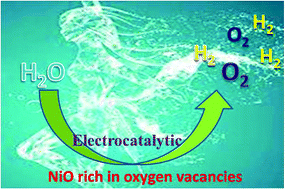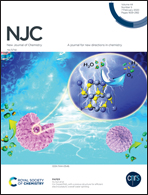Oxygen vacancies confined in nickel oxide nanoprism arrays for promoted electrocatalytic water splitting†
Abstract
Water electrolysis, as a promising approach for producing clean hydrogen energy from water, has been considered as an efficient way to solve the energy crisis but is greatly limited by the slow dynamics of the hydrogen evolution reaction (HER). Hence, we designed a defect engineering method to synthesize NiO nanoprisms with abundant oxygen vacancies as a subject of investigation to study the effect between oxygen vacancies and water splitting performance. Experimental results and theoretical calculation indicate that the NiO nanoprisms with abundant oxygen vacancies (b-NiO) show excellent water splitting performance due to the more exposed active area, enhanced conductivity, higher charge transfer rate and higher adsorption energy of H2O molecules. Moreover, the b-NiO material requires a small cell voltage of 1.59 V to drive a current density of 10 mA cm−2, which is lower than that of (1.70 V) pristine NiO (a-NiO). Our finding highlights the significance of defect engineering in designing high activity materials as robust water splitting catalysts.



 Please wait while we load your content...
Please wait while we load your content...